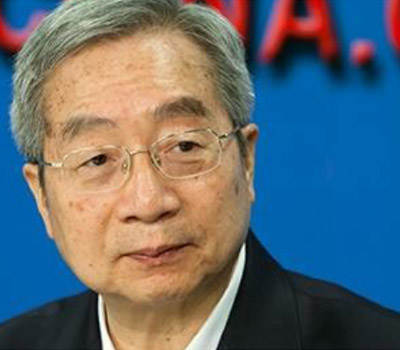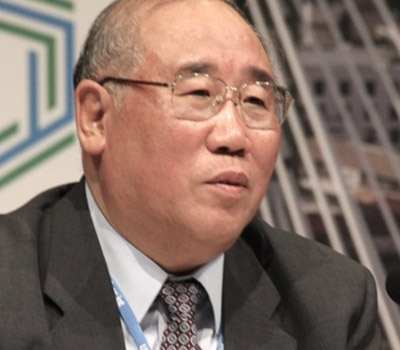This China Executive Briefing examines China’s carbon neutrality agenda, how it conflicts with Beijing’s other priorities, and the milestones and challenges ahead for the nation’s biggest emitters: power, industry and transport.


Introduction
Once a talking point, carbon neutrality by 2060 has started to turn wheels in Xi Jinping’s design for a secure, prosperous and more liveable PRC. Admittedly the world’s biggest emitter, Beijing aspires to be a model of green transition. Industries, regions and bureaucrats are on notice to overhaul their growth models. Energy security remains an imperative, as do manufacturing capacity and economic stability; all demand carbon-savvy futures. Few in China doubt Beijing’s resolve, but is there enough time and political space for the transition?
Video: Cooperating with China on climate change
Date: November 11th, 2021
Speakers: James Scullin – Director, Programs, Asia Society Australia | Zhang Xiliang, professor and director of Tsinghua University’s Institute of Energy, Environment and Economy | Barbara Finamore, senior visiting research fellow, The Oxford Institute of Energy Studies | Howard Bamsey, adjunct professor, School of Regulation and Global Governance at Australia National University | Dr. Elizabeth Thurbon, Scientia associate professor of international political economy, UNSW
Climate change pledges
Pledges to reduce emissions, made to the UN a year ago by Xi Jinping, now reverberate across the PRC, triggering a once-in-a-generation transition in energy and growth models. Having committed to peaking carbon by 2030 and claiming neutrality by 2060, State Council issued a crucial roadmap on 24 October, confirming Beijing’s stand at COP26 (31 Oct–12 Nov 2021).
China’s carbon neutrality pledge to the United Nations in September 2020 to peak carbon by 2030 and deliver neutrality by 2060 surprised domestic and international observers alike. Other countries making carbon neutrality pledges, like the UK, France and Brazil, saw their carbon emissions peak years ago, allowing them a comparatively longer timeframe to reach carbon neutrality than China.
CO2 emissions will peak
CO2 emissions will peak before 2030. This is a step up from China’s NDC (nationally-determined contribution) to the Paris Agreement, which stated it would achieve peak emissions around 2030.
Net zero will be achieved
Net zero will be achieved by 2050. The target includes not only CO2 but also other greenhouse gases, suggests special climate envoy Xie Zhenhua 解振华, though some commentators are unclear whether his view represents that of Beijing.
Dismounting the carbon tiger
Decarbonising is the agreed sole feasible means of mitigating the catastrophic effects of climate change. A harder target, carbon neutrality, is at least for now integral to Xi Jinping’s socio-economic mantras of ‘high-quality growth’ and ‘rejuvenation of the nation’. Solutions to domestic climate issues are also intended to deliver global standing in, and acceptance from, the world.
Winding down Deng’s ‘growth at all costs’ doctrine, unassailable for four decades, Xi envisages a self-reliant nation with an advanced tech industry and a prosperous and equitable society (see CEB September 2021 ‘China’s post-COVID macro playbook’). In official minds, carbon neutrality via homemade green technology—from solar panels to electric vehicles—paves the way for this self-reliance (see CEB February 2021 ‘Open to autarky: China’s coming 5-year plan’).
The challenges are formidable, not least for local governments who must juggle Beijing’s many priorities. Provinces must limit emissions while maintaining economic growth: a recipe for conflict as long as power hungry manufacturing—a mainstay of many provinces—remains reliant on coal. Energy demand will, for all the efficiency gains, continue to rise in the foreseeable future. Average PRC citizens currently consume only a third of the energy of an average American, or about two-thirds of an average European: they will not remain content to do so.
The 14th 5-year plan retains industry’s strategic share in the economy. Natural emissions-reduction pathways—transitioning from energy-intensive manufacturing to services—are less relevant to China than to advanced economies. Beijing has opted for a path less taken: maintaining its manufacturing capacity as it simultaneously builds a services sector.
chart 1: per capita energy demand 2001-18
source: National Bureau of Statistics
Roadmap and action plan for carbon neutrality emerge ahead of Glasgow COP26 summit
Non-fossil fuels will supply 80 percent of energy by 2060. This is the sole new quantitative pledge in a roadmap for carbon peaking and neutrality, announced 24 October 2021. Disappointing hopes for coal to be phased out earlier, Beijing is sticking with its 2020 pledges. It will not update its NDC again ahead of COP26.
Decarbonising was never whole-of-government, rather typically fragmented between regional, political and industry interests. The new roadmap is bold in its approach, urging defragmentation. It foreshadows
- absolute caps on emissions
- a carbon neutrality law
- stepped-up coal phase-out, 2026–30
- petrol consumption peak, 2026–30
All other policies will revolve around this roadmap. The top-level text outlines the overall direction of the journey to net zero; the nitty-gritty details and targets for the next decade are set out in the ‘Action plan for carbon peaking before 2030’, released 26 October.
Mission to end emissions
Transition must be orderly, agree China’s top leadership: haphazard decarbonisation measures could incur enormous social and economic costs. Poor coordination between policy goals poses an equal threat: the nationwide H2 2021 power crisis is primarily due to slowed coal production, brought on by rigid, inefficient power markets. Decarbonisation campaigns were not to blame.
Wealthy regions with services-based economies will lead; some industries will reach peak carbon and neutrality faster than others. In the primary energy mix, coal use—as pledged by Xi—will peak by 2025. But to smooth the transition to full reliance on renewables, gas will enjoy a growing share between now and 2040, in combination with CCUS (carbon capture, use and storage).
chart 2: the changing energy mix
sources: Tsinghua University ICCSD, China Statistical yearbook
Peaking carbon in 2030 is too late, warns Zhou, a member of China’s Climate Change Expert Advisory Committee. If it peaks too late, at too high a value, neutrality will be a bridge too far, he says. The earlier emissions peak, the better for the PRC as a global low carbon tech supplier; the later they peak, he forecasts, the better for China’s competitors. Peak emissions before 2025, Zhou advises provinces: curb emissions-intensive projects, roll out low carbon tech faster, ramp up energy efficiency and market renewables a.s.a.p. The power grid needs to be completely decarbonised by 2040, he claims.
A Tsinghua environmental engineering PhD in 1982, Zhou rose to the top rank of Beijing energy pundits. Among many energy sector research roles, Zhou was a lead author for multiple IPCC (Intergovernmental Panel on Climate Change) assessment reports.

Zhou Dadi 周大地
NDRC Energy Research Institute
director general emeritus
chart 3: carbon emission distribution by sector
source: World Resources Institute, 2017
Power: Integrating renewables
Power generation, the PRC’s greatest source of carbon emissions, accounts for some 40 percent of the total. Coal remains the go-to source, generating about two-thirds of the nation’s power in 2020. Demand for electricity should more than double by 2060, when it will be the supply source for over two-thirds of energy used in China, up from just 21 percent in 2015. Everything from steelmaking to transport will be electrified in pursuit of decarbonisation.
Renewables have made great strides, with the state firmly behind them. Beyond high-profile projects like the Three Gorges hydropower station, the cost of solar, and to a lesser extent wind energy, have dropped dramatically. This is thanks to lavish subsidies, robust manufacturing and supply chains, immense economies of scale and tech innovation driven by white hot competition. Already accounting for a third of globally installed renewables, the PRC is sprouting new capacity faster than the rest of the world combined. Contributing 5 percent of China’s total power, nuclear will remain as backup for intermittent renewables in coastal provinces, even as current policy clearly favours renewables and storage.
Power prices are set by the state, their input costs by the market: a recipe for inefficiency. Reform will be essential to ensure renewables are taken up. Freeing up electricity prices has long been politically loaded, complicated by family dynasties, vested economic interests and fear of inflation. But as Beijing seeks to reduce emissions by pricing carbon and getting renewables into the grid, power markets need to liberalise. They must transfer costs to end users, modulate demand and allow renewables and storage projects to realise potential profits. The recent power crisis is accelerating slow-moving reform. Sweeping new measures, effective from 15 October 2021, removed all power price ceilings for energy-intensive industries, a move that officials hope will allay the crisis and, in the long term, promote restructuring of industry and drive down emissions.
An array of political and technical hurdles persist in preparing the grid to handle large volumes of renewable power, expected to increase sevenfold by 2060. Robust cross-provincial transmission is needed to funnel clean energy from the renewables-rich west to the power-hungry east. Energy storage solutions are needed to back up intermittent power generation, but policy uncertainties, high costs and insufficient standards hinder expansion.

Xie Zhenhua 解振华
China’s special envoy on climate change
A veteran climate diplomat, Xie was reportedly instrumental in driving Xi’s carbon neutrality pledge. Xie led efforts at Tsinghua University’s Institute of Climate Change and Sustainable Development to model possible emissions reduction trajectories, and submitted a policy proposal to the leadership. Xie was previously vice chair of NDRC (National Development and Reform Commission) and head of the environment ministry, with decades of experience in environmental and climate change issues.
On the international stage, he is known to be a tough yet friendly and humorous climate negotiator. He is best known for working with thenUS Secretary of State John Kerry in 2014 to lay the foundations for the Paris Agreement, as well as for blunt remarks at COP17 in 2011 when he accused developed countries of being two-faced in their approach to climate change.
Industry: Better structure, better tech
The PRC’s manufacturing sector remains core to its industry policy and central to its drive for industry chain security (see CEB September 2021 ‘China’s post-COVID macro playbook’). This will not change.
As a global manufacturing hub, the PRC racks up a disproportionately high volume of emissions from this sector, compared to other nations. Its heavy polluting industries stand in need of replacement by high-tech, energy-efficient alternatives running on electricity.
Reductions in emissions from industry have tended in the past to consist of windfall efficiency gains or supply-side reform. But as carbon neutrality rockets up the priority list, Beijing has begun to decarbonise the sector top-down. Just three sectors—steel, cement and chemicals produce some 80 percent of CO2 emissions from industry. All have seen draconian measures to curb production. A case in point was the central decree issued days after the 14th 5-year plan’s adoption in March 2021: Tangshan, the world’s biggest steel-producing hub, was ordered to slash production, sending steel prices through the roof. Further, provinces suspended production in slews of factories in H2 2021 to meet Beijing’s energy consumption targets. The strict and continuing measures limiting energy- and emissions-intensive projects are classically topdown: new steel mills and cement factories will find it ever harder to gain approvals and old, polluting factories will be shut down.
Progress depends on policy certainty, a combination of administrative measures and market-based policy tools. Local governments have been reluctant to change their existing heavy industry base, despite low profit margins. To bring about sustainable changes, as opposed to the shock therapy seen this year, Beijing needs to align carbon neutrality with other political goals: becoming a manufacturing powerhouse, ensuring energy security, and others. This includes rules for highemissions industry bases, setting long-term expectations for carbon price hikes, and sustained R&D investment in low-carbon technologies, e.g. secondary steelmaking and green hydrogen. Only then will localities face a hard reckoning and see carbon neutrality as an opportunity, rather than another requirement from the centre that must be satisfied.
Chief architect of the PRC carbon market, Zhang argues the power sector must be fully liberalised for carbon pricing to realise its full potential. Regulators must watch for carbon leakage (forcing emissions-intensive production overseas); carbon pricing for industries where this is a risk may proceed more slowly, he cautions.
Launch cap-and-trade before 2025 in some sectors, urges Zhang, keeping others under a carbon intensity regime. Carbon should cost at least US$15 per tonne.
Lead author of landmark reports for both the PRC government and the IPCC, Zhang continues to shape domestic law and policy.

Zhang Xiliang 张希良
Tsinghua University Institute of Energy
Environment and Economy director
Carbon market: easy does it
After years of pilots, preparation and delays, the PRC carbon market began trading in July 2021. Regulating emissions intensity rather than absolute emissions, the market only covers the power generation sector (2,200+ thermal power plants, emitting some 4.5 bn tonnes of CO2 annually) in its initial phase. By 2025, it will cover 60 percent of China’s emissions; seven more sectors will gradually be added: steel, building materials, chemicals, non-ferrous, petrochemicals, papermaking and aviation.
Regulators have first set up trading mechanisms and emissions accounting; tangible emissions reductions are still years off. CCERs (China Certified Emissions Reductions) will allow firms to offset up to 5 percent of their emissions by investing in renewables and carbon sinks. Carbon taxes may be levied in the future, their value guided by prices in the emissions trading market.
Transport: Road to rail
Transport is China’s third largest emitter; 80 percent of its emissions come from roads. Impressive progress is claimed: after hundreds of billions in subsidies and R&D support through the 2010s, NEVs (new energy vehicles), mostly EVs (electric vehicles) and plug-in hybrids, finally took off. Monthly sales reached 17 percent of all vehicles in September 2021, close to the 20 percent goal previously set for 2025.
Investing famously in public transport, the state has built a dense network of interregional high-speed rail, emitting far less than aviation or private cars. Rail is preferred in part due to supply chain security: the PRC still relies heavily on foreign suppliers in aviation, whereas its rail tech, having borrowed extensively from pioneers overseas, is now worldclass. The last mile may well be the toughest: aviation and shipping are still in search of feasible low-carbon solutions.
chart 4: historical and predicted new energy vehicle sales
Political compromise is no easier for transport than for power or industry sectors. Fears for the conventional auto industry have long held Beijing back from committing to phase out fossil fuel-powered vehicles. Long-term infrastructure planning and the framework for energy-efficient and decarbonised mobility, e.g. EV charging facilities, assumes cross-regional coordination and urban planning expertise, both sorely lacking in poorer inland regions and congested top-tier cities. Beijing’s ‘transport powerhouse’ aspiration, entailing a never-ending pursuit of tech autarky, may incline it to opt for less efficient domestic technology over alternatives in the global market.
sources: China Association of Automobile Manufacturers, CITIC Securities
Beyond power, industry and transport
Sectors other than the big three also face decarbonising pressure. Beijing has introduced targets and standards for green buildings, such as building envelopes, with related legislation expected. The 2030 action plan mandates that by 2025, all new urban buildings must meet environmental building standards. Heating in northern China (and to a lesser extent cooling in the south) is increasingly electrified or at least gasified, though progress has been far from smooth.
Agriculture accounts for 7.4 percent of greenhouse gas emissions (CO2e), largely rice cultivation, livestock and fertiliser use. Little effort has been made to directly address these emissions so far; boosting soil carbon sequestration and transitioning from manufactured fertilisers to farm waste will likely be the first major steps.
Brace for policy conflict
The PRC has taken giant steps in tech solutions for a carbon neutral future: solar panels, long-distance power transmission, electric vehicles. Now comes the hard part. To dispel uncertainty, Beijing may need to specify the trade-offs between carbon neutrality and other priorities, above all social stability, energy security and manufacturing prowess. Agendas are bound to conflict: emissions campaigns or not, coal remains indispensable in heading off power shortages through winter.
Yet synergies between long-term goals are possible as well as:
- moving up the industrial value chain both increases value-added manufacturing and reduces emissions intensity
- a renewables-storage regime for the power grid dampens risk of commodity price fluctuations, bolstering energy security
- fostering NEVs, etc.; low carbon tech positions the PRC as a go-to supplier, while reducing emissions
Big bets on green tech — energy storage, hydrogen and CCUS — while essential, face a labyrinth of challenges. As top-down measures and the market bend China’s development trajectory towards net zero, fierce conflicts of interest are expected.
Xi Jinping’s commitment to carbon neutrality is non-negotiable. The question is not the will, but whether there is enough time and political space to deliver neutrality.

Wang Shujuan 王淑娟
Investment Association of China, expert advisor
‘Clean coal’ doesn’t exist, argues Wang in response to calls for developing more ultra-supercritical coal power plants. Producing coal destroys the environment. Every tonne burnt emits the same amount of carbon, whether the plant is subcritical, supercritical or ultra-supercritical. Subsidies thrown at coal power plants would, she hints, be better spent on renewables.
Holding a PhD in energy systems from Tsinghua University. Since 2000, Wang has been a professor there. She advises investors in the energy sector.
Green finance: no green, no grow
Carbon neutrality is heavily investment-driven. State support for green finance will be a mainstay. As carbon neutrality is translated into projects, the market is set to grow. Banks are on notice to dedicate funding to green projects on pain of ‘no green, no growth’ in the loans they can book. Aligning domestic with international green finance standards is on the agenda, but takes time. ‘Clean coal’ and other fossil fuel projects deleted from a draft of Beijing’s green bond catalogue in May 2020, were not made official until April 2021. Weeding out rent-seeking and outright fraud in the green finance space will be a priority as capital flows increase.



